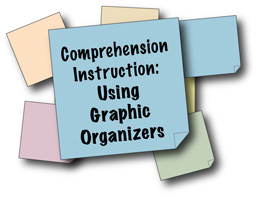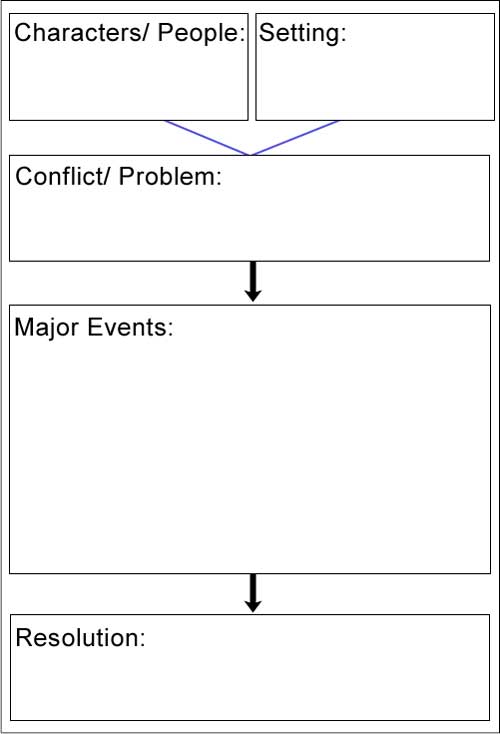What should content-area teachers know about comprehension instruction?
Page 11: Using Graphic Organizers
 Graphic organizers are visual aids designed to help students organize substantial amounts of content information. In addition to being effective for vocabulary instruction, graphic organizers can also enhance reading comprehension by helping students to categorize information and to show the relationships among important concepts. There are many types of graphic organizers. What works for one topic or task may not be appropriate for another.
Graphic organizers are visual aids designed to help students organize substantial amounts of content information. In addition to being effective for vocabulary instruction, graphic organizers can also enhance reading comprehension by helping students to categorize information and to show the relationships among important concepts. There are many types of graphic organizers. What works for one topic or task may not be appropriate for another.
Listen as Cynthia Shanahan discusses how teachers should select the type of graphic organizers they wish to use based on the content area and desired student outcomes (time: 2:16).
Cynthia Shanahan, PhD
Associate Dean for Academic Affairs
Executive Director UIC Council on Teacher Education
University of Illinois at Chicago

Transcript: Cynthia Shanahan, PhD
Graphic organizers come in all kinds of shapes and sizes and for all different purposes. They can help in as many ways as there are graphic organizers. There are so many graphic organizers for teachers to choose, so they really need to take several things into account. First, their main questions should be what do they want their students to get out of whatever it is that they’re reading. Think about those outcomes and those goals and choose a graphic organizer that’s going to help students meet those goals. Then you have to pay attention to the text. Some graphic organizers work better for different kinds of information, and it depends on the information in the text. For instance, if it’s a science article or a science text, you’re going to be choosing among a number of graphic organizers that might be different than if you are having your students reading a history text or a mathematic text. You have to take into account the kind of information, even within those discipline areas. There are differences in the way that text organize the information, and you need to pay attention to that. For instance, in a social studies textbook you might have comparison-contrast going on if it tells you about one country then tells you about another country, and you want students to compare and contrast, that would lead you to a comparison and contrast organizer. If you want them to read several documents and to come up with an answer to a central question, that’s a different kind of graphic organizer than if you want them just to read one document and learn the information in the document. Finally, you have to look at the discipline area that’s the focus of the reading. And think about what kinds of questions are typical of that discipline. There are graphic organizers that are specific to English but you would never use in chemistry or history or mathematics. So you really have to think about what it is that you want your students to know, and that’s based upon the content area that you’re in.
Teachers can find or create a variety of graphic organizer templates to improve reading comprehension in the content areas. It is important to keep in mind that the template’s design should be aligned to the teacher’s purpose for using it. For example, two teachers from Wilton High use different types of graphic organizers to help students organize information from their texts.
| Teacher/ Assignment | Purpose | Graphic Organizer | ||||||||||||||||
|
Ms. Nor, 11th Grade, World History Select a historical novel and summarize its key elements. |
Ms. Nguyen provides a graphic organizer to assist some students with organizing and summarizing information from the historical novel. |
|
||||||||||||||||
 (Close this panel)
(Close this panel) |
||||||||||||||||||
|
Ms. Chesser, 10th Grade Chemistry Be able to identify substances and their properties for an end-of-unit test. |
Ms. Chesser provides a graphic organizer to assist students to organize their notes for an upcoming test. | |||||||||||||||||
When they use any kind of graphic organizer for the first time, content-area teachers need to explain its purpose and use. Teachers should model how to complete each section by verbalizing how to extract information from the written text and how to record it. With sufficient demonstration and guided practice, many students will be able to complete graphic organizers independently. In addition, allowing students to complete the graphic organizer with a partner or small group has the added benefit of creating opportunities to discuss the information, which in turn will help them to further clarify and reinforce the concepts.